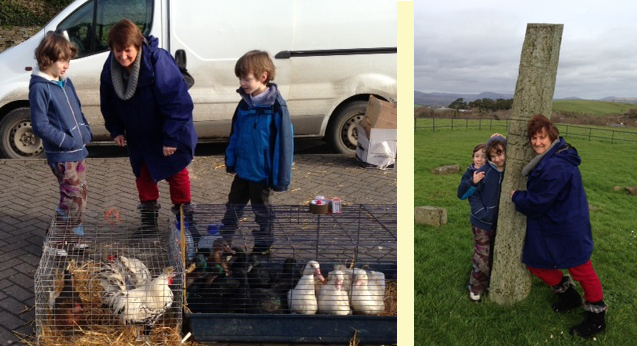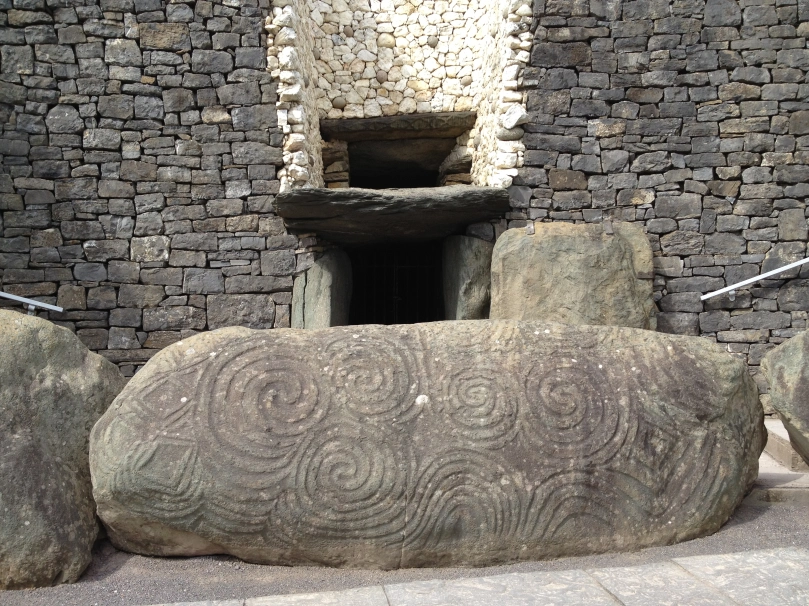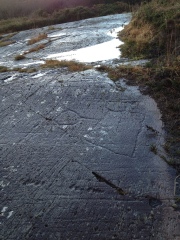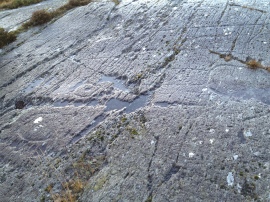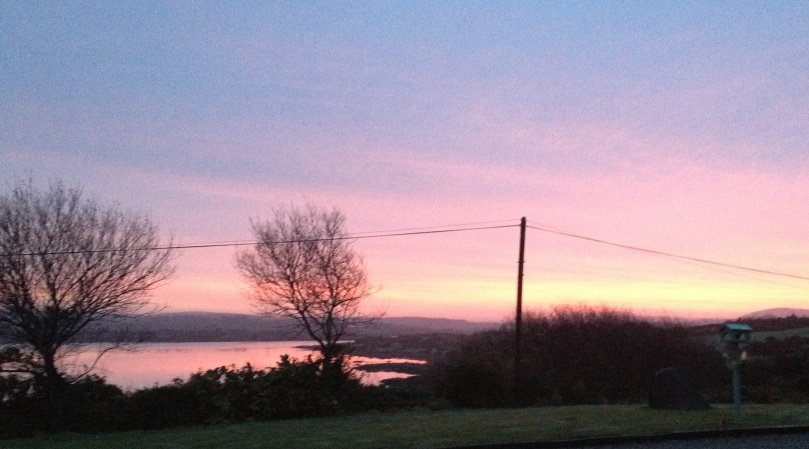

Author and Danny – with brand new table!
Perhaps you didn’t know that we have our own mini airport here – right outside Ard Glas! It all started when we asked our friend Danny – who constructs wonderful furniture and accoutrements in the Irish vernacular, and paints them green – to make us a birdtable. He duly did so, and painted it green. It now sits outside our windows and provides us with hours of entertainment.
Firstly, we have a squadron of Spitfires. These are our Chaffinches – to date the record is 24 of them on or around the table at any one time: handsome birds, male and female almost alike, but the males have perky crests which they raise when they want to assert themselves. They whizz in, a whole bunch at a time in close formation, and settle on the grass landing strip where they methodically hoover up the seeds and crumbs. They don’t seem to take much notice of us or the bigger birds – they just get on with the job in hand. Quite suddenly they must get a call to action, for they all take off at once and fly across to the fields down below us, returning en masse after a short interval. They are quite quarrelsome, and often engage in dogfights with each other, diving, spinning and turning in the air.
Then there are the helicopters: these are Tits, of several varieties – Great, Coal and Blue. They hover around the seed holders and suet balls, then make a vertical landing on an impossible perch. They will hang upside down and spin around, quite unperturbed. But they don’t stay long: one seed, it seems is enough – then they are off to a tree or bush to enjoy it at leisure, before returning on their distinctive undulating flight paths.
We no longer see the Goldfinches: they have gone south for the winter. Also vanished is the Jay, whom we saw only once, taking a break from its journey to the oak woods inland.

Airport in action…
Daily regulars are our three Magpies: maybe they are one male and two wives, or perhaps parents and a child – they always come down together. One has to admire their magnificence: sleek and shiny. For me they are the flight officers and crew. You know when you see them passing through the concourse at the airport carrying those intriguing flight bags? Crisply uniformed, black and white – and strutting importantly through the crowds…. That’s Magpies: they strut. And they do think of themselves as important. They’ll dismissively push away the smaller birds and take large beakfuls of whatever is available. If I see only one I have to remember to say the mantra – “Good morning Mister Magpie – hope your wife and children are well” else some bad luck might befall me. Then, of course, there is the other mantra – “One for sorrow, two for mirth, three for a marriage, four for a birth…” As it’s invariably three of them they must be trying to send us a message.
It’s odd that the biggest birds of all are the most nervous: these are the Hooded Crows. We have two regulars and they are undoubtedly the Jumbo Jets around here. It’s great to watch them coming in – a slow descent, hovering with their wings up, then a solid bump onto the ground. But they are always on the lookout: they take ages to pick up a crust or a nut. They stand a little way from it, eyeing it up, but will then look all around to make sure no-one is watching before jumping and snatching it, quickly flying off to hide it in a safe place. Well, they don’t take off quickly – it seems to be quite an effort for them to get airborne: they need the longest runway.
I haven’t mentioned the resident Robin, and the Wren has disappeared since Christmas. I’ve got a feeling the Wren Boys were out on St Stephen’s Day, and succeeded in catching it for their supper! The Wagtail is a constant: as it is always walking around on the ground with its perky manner I feel it is that man with the two bats who very cleverly makes all the planes manouevre in impossibly tight circles, just for the fun of it…

Robert communes with feathered friend
Email link is under 'more' button.










